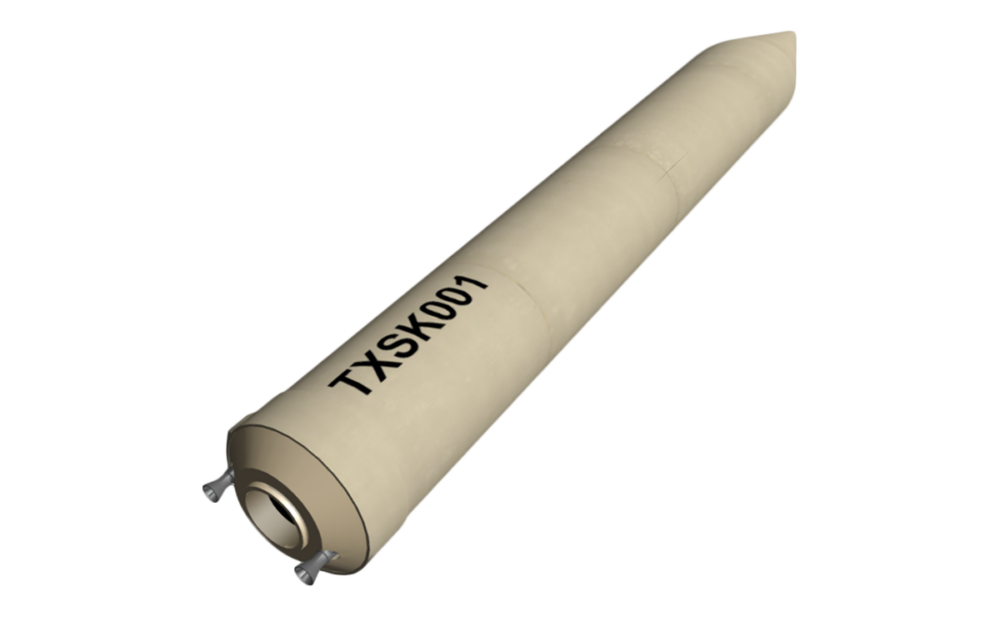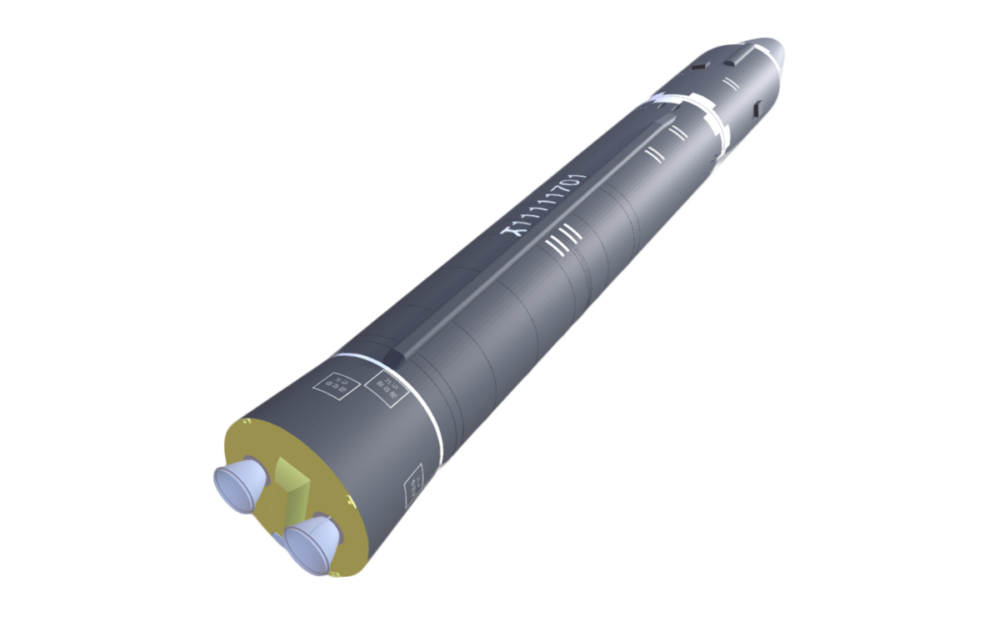
The CNS Iran Missile and SLV Launch Database
Collection of Iranian missile tests including the date, time, missile name, launch agency, facility name, and test outcome. (CNS)
Saudi Arabia does not possess weapons of mass destruction (WMDs) and is a party to most relevant nonproliferation treaties and agreements. Saudi Arabia possesses intermediate-range ballistic missiles capable of delivering unconventional warheads, although Riyadh has publicly declared that it will only pair these missiles with conventional payloads. [1]
Saudi Arabia is a non-nuclear weapon state party to the Treaty on the Non-Proliferation of Nuclear Weapons (NPT), and has a Comprehensive Safeguards Agreement with the International Atomic Energy Agency (IAEA). Because Saudi Arabia lacks any nuclear reactors or meaningful quantities of nuclear materials and negotiated a Small Quantities Protocol (SQP) with the IAEA. [2] However, the Saudi government has pursued numerous projects to develop its nuclear industry. These include the 2010 establishment of the King Abdullah City for Atomic and Renewable Energy (KA-CARE) in Riyadh, nuclear cooperation agreements with several countries (including France, Argentina, South Korea, and Kazakhstan), and a long-delayed proposal to construct 16 nuclear reactors by 2040. [3]
In February 2019, a U.S. Congressional report indicated that Trump administration officials had pursued a nuclear reactor construction deal with Saudi Arabia. The deal attracted controversy for allegedly bypassing the 123 Agreement process stipulated by the Atomic Energy Act, which requires Congressional approval for sensitive transfer of nuclear technologies to non-U.S. countries. [4]
No credible evidence suggests that Saudi Arabia has ever pursued a nuclear weapons program. Nonetheless, high-ranking Saudi officials have hinted at the desirability of possessing nuclear weapons, usually in the context of countering the nuclear ambitions of Saudi Arabia’s chief regional rival, Iran. In 2018, Crown Prince Mohammed bin Salman publicly stated, “If Iran developed a nuclear bomb, we will follow suit as soon as possible.” [5] Although Saudi Arabia expressed qualified support during the Obama administration for the Joint Comprehensive Plan of Action (JCPOA), which allows intrusive monitoring into Iran’s nuclear program in exchange for sanctions relief, Saudi officials praised the Trump administration’s pullout from the agreement in 2018. [6]
For more details, visit the Saudi Arabia Nuclear page
No evidence suggests that Saudi Arabia possesses either a chemical or biological weapons program or that Saudi Arabia intends to develop such weapons. [7] Saudi Arabia is a party to both the Biological and Toxin Weapons Convention (BTWC), and the Chemical Weapons Convention (CWC). [8] A 2005 domestic law bans the production, possession, and storage of both chemical and biological weapons within Saudi Arabia, and declares that any individuals found noncompliant will face a fine of one million riyals and a prison sentence of up to 20 years. [9]
Saudi Arabia’s ballistic missile arsenal consists entirely of missiles purchased from China, although recent evidence suggests Saudi Arabia may now have the capability to develop ballistic missiles domestically. Open-source analysis from January 2019 indicates that the country possesses solid-fuel ballistic missile production capabilities, possibly supplied by China. [10]
Saudi Arabia procured Dongfeng-3 (DF-3; NATO: CSS-2) intermediate-range ballistic missiles from China in 1987, prompting some concern about Saudi intentions regarding the plausible use of unconventional payloads. [11] Saudi Arabia currently only deploys the DF-3 with conventional warheads and has pledged not to couple the missiles with unconventional payloads. [12] Saudi Arabia has never tested the DF-3, making its importance to Saudi defense strategy unclear. [13] Recent reports suggest that Saudi Arabia purchased the Dongfeng-21 (DF-21; NATO: CSS-5s) ballistic missiles from China in 2007. [14] This purchase is regarded as a replacement or update of Saudi Arabia’s DF-3 missile purchase in 1987; the DF-21 has a shorter range but is more accurate than the DF-3. [15]
Saudi Arabia acquired ballistic missile defense capabilities following the Gulf War, during which Iraq launched short-range ballistic missiles (SRBM) and cruise missiles against the Kingdom. Saudi Arabia currently fields several American-made systems, including two variants of the Hawk surface-to-air missile (SAM) system and two variants of the Patriot SAM system. [16] In November 2018, the sale of the U.S. Terminal High Altitude Area Defense (THAAD) systems to Saudi Arabia was finalized in a deal worth roughly $15 billion. [17]
For more details, visit the Saudi Arabia Missile page
Sources:
[1] Naser M. Al-tamimi, China-Saudi Arabia Relations, 1990-2012: Marriage of Convenience or Strategic Alliance? (Abingdon: Routledge, 2013), 65-66.
[2] SQPs limit the declarations and inspections requirements of countries with small nuclear programs; "Saudi Arabia Signs Small Quantities Protocol," Global Security Newswire, 16 June 2005, www.nti.org.
[3] The original 2011 plan called for 16 new reactors in order to generate around 20% of the Kingdom’s electricity by 2032. Saudi Arabia has yet to break ground on any nuclear reactor project, and the target date for completion has been pushed back to 2040; Abdullah bin Abdul Aziz Al Saud, Royal Decree Establishing King Abdullah City for Atomic and Renewable Energy, 18 February 2010, www.kacare.gov.sa. "Nuclear Power in Saudi Arabia," World Nuclear Association, www.world-nuclear.org; "Kazakhstan and Saudi Arabia Agree to Nuclear Cooperation," World Nuclear News, 26 October 2016, www.world-nuclear-news.org; "Saudi Arabia’s Nuclear, Renewable Energy Plans Pushed Back," Reuters, 19 January 2015, http://uk.reuters.com.
[4] Mary Beth D. Nikitin, Paul K. Kerr, “Nuclear Cooperation with Other Countries: A Primer,” Congressional Research Service, 15 January 2019, fas.org; Ken Dilanian, “Flynn-backed Plan to Transfer Nuclear Tech to Saudis May Have Broken Laws, Say Whistleblowers,” NBC News, 19 February 2019, nbcnews.com; Chad Day, “Flynn Pushed to Share Nuclear Tech with Saudis, Report Says,” Associated Press, 19 February 2019, www.apnews.com.
[5] Stephan Kalin and Parisa Hafezi, “Saudi Crown Prince Says Will Develop Nuclear Bomb If Iran Does: CBS TV,” Reuters, 15 March 2018, www.reuters.com.
[6] Norman Cigar, Saudi Arabia and Nuclear Weapons: How Do Countries Think About the Bomb? (Abingdon: Routledge 2016) p. 1; “Kingdom of Saudi Arabia’s Statement on the United States Withdrawal from the JCPOA,” Embassy of the Kingdom of Saudi Arabia, 8 May 2018, www.saudiembassy.net.
[7] Zygmunt F. Dembek, "The History and Threat of Biological Weapons and Bioterrorism," Hospital Preparation for Bioterror: A Medical and Biomedical Systems Approach, Joseph H. Mclsaac III, ed., (Burlington: Academic Press, 2006), p. 29.
[8] "OPCW Member States," Organisation for the Prohibition of Chemical Weapons, www.opcw.org.
[9] "Saudi Arabia: Weapons of Mass Destruction Capabilities and Programs," James Martin Center for Nonproliferation Studies, www.nonproliferation.org.
[10] Paul Sonne, “Can Saudi Arabia Produce Ballistic Missiles? Satellite Imagery Raises Suspicions,” The Washington Post, 23 January 2019, www.washingtonpost.com.
[11] While the United States expressed concern that the ballistic missiles could be used to deliver nuclear warheads, the conventional use of these missiles during the Iran-Iraq War (1980-1988) lent credence to Saudi Arabia’s argument that it would only use conventional payloads on the missiles; Naser M. Al-tamimi, China-Saudi Arabia Relations, 1990-2012: Marriage of Convenience or Strategic Alliance? (Abingdon: Routledge, 2013), 65-66.
[12] Naser M. Al-tamimi, China-Saudi Arabia Relations, 1990-2012: Marriage of Convenience or Strategic Alliance? (Abingdon: Routledge, 2013), 65-66; Anthony H. Cordesman, Saudi Arabia: Guarding the Desert Kingdom (Oxford: Westview Press, 1997), 179.
[13] Anthony H. Cordesman, Saudi Arabia: Guarding the Desert Kingdom (Oxford: Westview Press, 1997), 179.
[14] Jeff Stein, "The CIA Was Saudi Arabia’s Personal Shopper," Newsweek, 9 January 2014; Jeffrey Lewis, "Why Did Saudi Arabia Buy Chinese Missiles?" Foreign Policy, 30 January 2014.
[15] Jeff Stein, "The CIA Was Saudi Arabia’s Personal Shopper," Newsweek, 29 January 2014; Ethan Meick, "China’s Reported Ballistic Missile Sale to Saudi Arabia: Background and Potential Implications," U.S.-China Economic and Security Review Commission Staff Report, 16 June 2014.
[16] Jeremy Binnie, "US Approves Saudi PAC-3 Sale," IHS Jane’s 360, 2 October 2014, www.janes.com.
[17] Mike Stone, “Saudi Arabia Inks Deal for Lockheed’s Missile Defense System,” Reuters, 28 November 2018, www.reuters.com.
Sign up for our newsletter to get the latest on nuclear and biological threats.
Collection of Iranian missile tests including the date, time, missile name, launch agency, facility name, and test outcome. (CNS)
Information and analysis of nuclear weapons disarmament proposals and progress in the United States.
A collection of missile tests including the date, time, missile name, launch agency, facility name, and test outcome.
